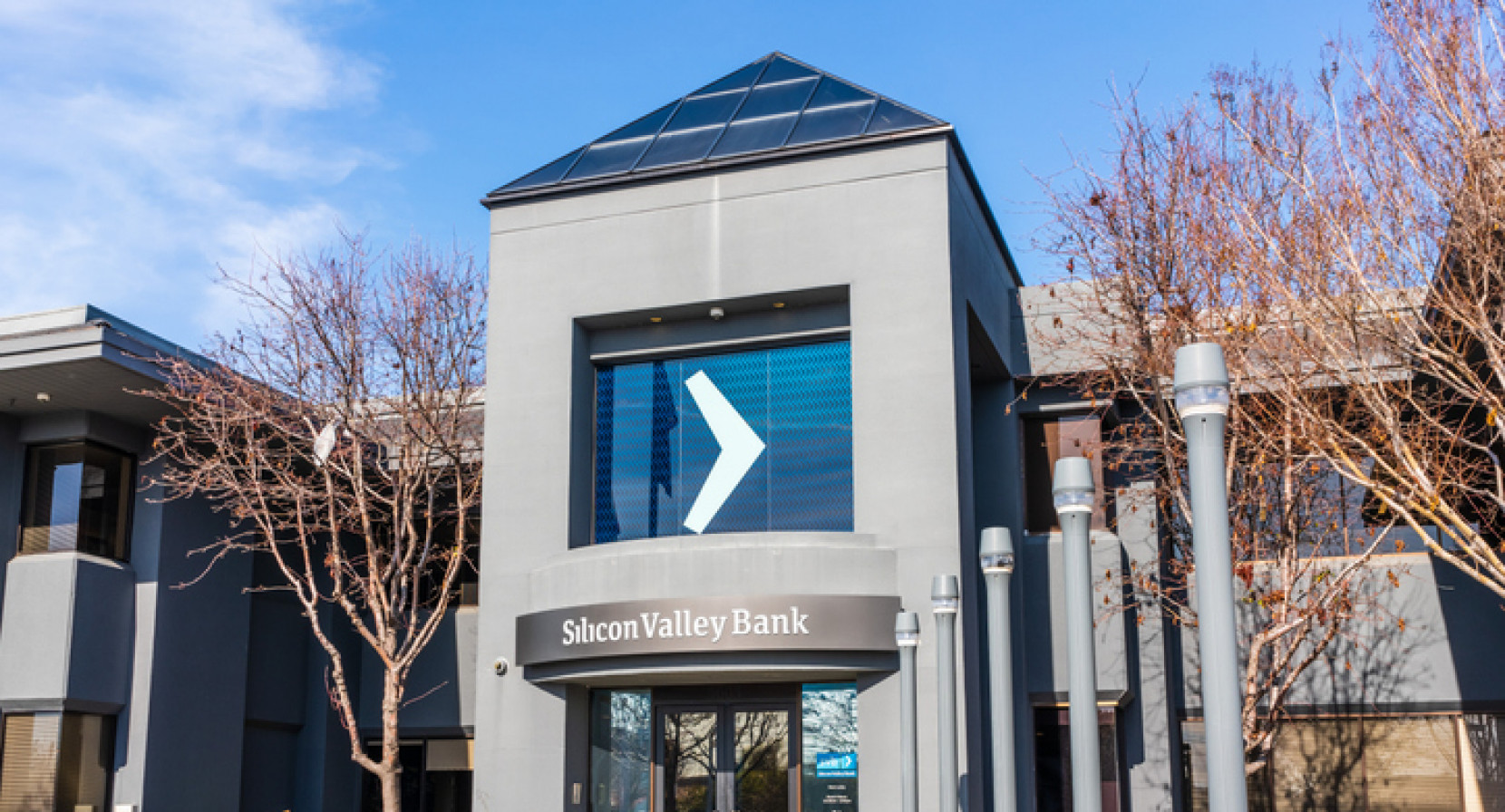We've seen an incredible bank situation unfold over the past week. There is a lot that could be said (and has been said elsewhere) about this — I'm going to try to apply SMI's "what you need to know rather than everything there IS to know" standard and get you quickly to the bottom line.
What happened
The focal point of this mini bank run was Silicon Valley Bank (SVB), a regional bank whose primary customers were technology startups in California. Multiple factors played into the crisis that erupted Thursday, including the fact that these businesses have been hit the hardest by the bear market over the past two years, so their cash needs were greater, as well as the unique business profile of this bank that often involved these businesses parking way more capital in this bank than is normal for other business banking relationships.
But the BIG issue was the rapid rises in interest rates over the past year. As capital poured into the tech sector in 2020-21, SVB had to do something with it, and with rates still super low at that point (and the Fed loudly saying inflation was transitory and they had no plans to raise rates), SVB made the fairly reasonable decision to park this cash in longer-dated Treasuries and Mortgage Bonds, taking what seemed to be a relatively small step out the risk curve to earn a little more yield.
As rates rose rapidly over the past year, these bonds lost a lot of "market value." Remember what SMI has taught over the years — if you hold a bond to maturity, you know exactly what you're going to get back out of it. This was the plan for SVB (or at least a reasonable backup plan). The bonds were there and they had real value.
The problem was that if these bonds had to be sold right now to raise cash, the market value of those bonds today was a lot less than the market value a year or two ago when the bonds were purchased. And that's exactly what happened as SVB experienced a 2023 version of a 1930s bank run. As SVB's customers started pulling money out of the bank, the bank was forced to sell some of these bonds, taking a roughly $2 billion haircut on a sale of ~$24 billion. Once a few sharpies realized the danger this posed if SVB had to liquidate their whole book of bonds, the selling pressure intensified and the bank run was on.
On Friday, the FDIC — the government program that insures bank deposits up to $250,000 per individual or account — took over SVB. By this time, investors had crunched the numbers and realized there were many other banks facing similar, if less dramatic, versions of this same basic problem. And since no one wants to be the last person in line to get their money out during a bank run, everyone got to spend the weekend wondering whether their account at their specific bank was safe.
Enter the regulators
This just came out last night, so I'm sure we'll parse through it in greater detail later, but the short version of the government's solution to this was basically to assure individuals their deposits are safe. Not in the "empty words" kind of way, but by actually setting up a program that lets these distressed banks pledge these bonds that they own and get cash for them. They'll pay interest on those "loans," but it takes the crisis element out of the picture. Again, the important thing here is these are reasonably safe bonds — Treasuries and mortgage-backed bonds. They have real value. This is the Fed arguably playing its intended role of temporary liquidity provider to the banking system to bridge it across the type of short-term liquidity shortfall caused by something like a bank run.
If there's one thing to understand about a bank run, it's a largely psychological phenomenon. If you take away the reason for the bank run (maybe I can't get my cash out), the bank run doesn't happen.
Here's the nod to the "I can't believe they bailed them out...again!" crowd. Yeah, some of the details stink. And there's always moral hazard in these interventions. The plan they came up with was actually a bit more surgical than I expected, but still not painful enough to satisfy all of my Old Testament leanings.
So what about my bank?
My take on this is the government is essentially reiterating the one bipartisan, unbreakable agreement that has been in place since the 1930s — they aren't going to let individual depositors lose money for the mistake of choosing a crummy bank. Because make no mistake, Silicon Valley Bank (and a couple of others that have failed in this episode) are crummy banks. They didn't do their risk-management job, they courted too much risk, and maddeningly, they benefited from all that on the upside, which is why it stinks that the depositors don't feel at least a little pain to discourage this in the future.
On the other hand, my understanding at this point is that the bank management team will all lose their jobs, and I think the equity and bondholders of the bank will lose their investments, which is a different outcome than what we saw in many cases from the 2008 Financial Crisis bailouts. I'm not cheering these outcomes, but they are a very necessary part of disincentivizing future bad behavior.
Back to "what about my bank?" Big picture, if your account is under the $250,000 limit ($500,000 if it's a joint account with your spouse), I don't see much danger at this point. Regardless of the specifics of this plan, the intent seems clear — the government is going to bail out smaller accounts in the event of a problem.
Now, if you have a personal or business account larger than $250,000, that's a different story. Unfortunately, in that case you may need to consider shifting at least part of that to a top "too big to fail" bank. I hate that, because the last thing I want is a two-tiered banking system with a handful of huge "safe" banks and the rest of the field less-so. But unfortunately, it appears that's the direction things are heading.
A note about Schwab
Schwab has gotten caught up in all this chatter and has seen their stock price take a beating, as Schwab is actually the 7th-largest bank in the U.S. They do have some of the same problems as these other banks, as they have investments that are down in value too. But I'm not particularly worried about Schwab for two reasons:
This government "guarantee" covers Schwab deposits too. If they weren't going to let crummy Silicon Valley Bank depositors take a haircut on their deposits, it seems totally implausible they're going to allow that for Schwab depositors.
Unlike an ordinary bank, most of Schwab's "deposits" are actually cash in customer's brokerage accounts. And a lot of those accounts are held through advisor accounts (such as our affiliates, SMI Advisory). So whereas a normal bank customer might be inclined to transfer $100,000 from their bank account to a higher-yielding money market fund at another institution (with all the friction of a few mouse clicks), a Schwab customer is extremely unlikely to close a brokerage account and move it. Sure, a customer might move money out of Schwab's "sweep" vehicle and into something else, but as customers trade and make new deposits, there will always be money moving through those Schwab cash vehicles. It just strikes me as an apples-to-oranges comparison to think of these accounts as similar to all the other "normal" banks.
Here's a short article that includes statements from Schwab executives. It reinforces my view that Schwab earnings may well suffer from all this (so it may not be a great investment right now), but it seems unlikely that depositor assets are unsafe there.
Conclusion
I've stretched my original parameters, so I'll wrap this up. Big picture, I'm not concerned about individual depositors now that the government's "bailout the little guys" intention has been made clear.
That's not to say there won't be more crises as the final stage of this bear market unfolds. Credit events are a typical late-stage bear market phenomenon, and I won't be surprised to see different manifestations show up as we traverse the rest of this cycle. SMI portfolios are positioned so conservatively at this stage precisely because it's impossible to know where the breakages may occur. But the common theme is tightening financial conditions lead to a hunger for liquidity. Having lots of cash, gold, and bonds is the exact type of mix that makes a ton of sense during these episodes, and that's why those investments have all done really well over the last several days as the banking system wobbled.
If you'd like to go deeper than this "what you need to know" analysis, Bob Elliott and Jim Bianco have been doing a good job of covering this on Twitter. Just be aware that it's nearly impossible to avoid getting swept into the "good/bad, right/wrong" currents once you start reading out there!








